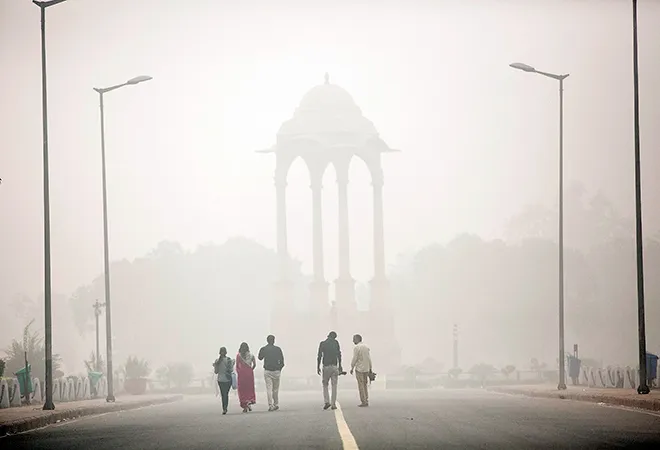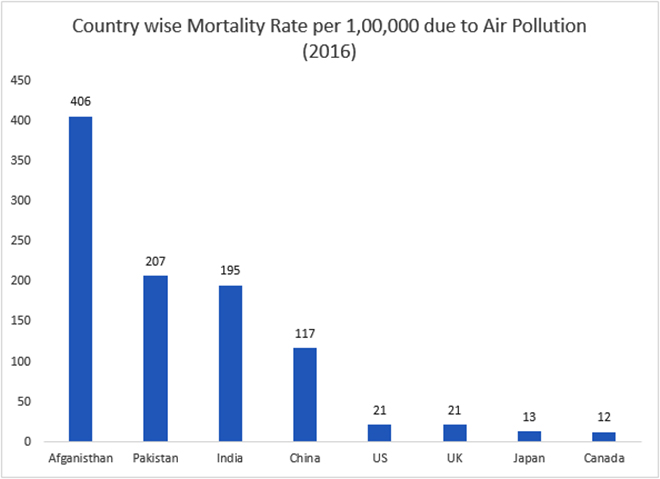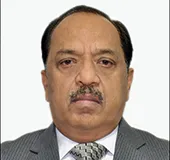
The nationwide lockdown to stop the spread of COVID19 has led to a dramatic drop in the level of air pollution in India. While minimum vehicles traffic, suspended construction and industrial activities due to the lockdown has brought the air quality of cities to “satisfactory levels,” the impact is going to be short-term and temporary. Achieving long-term air quality thus, still remains a wider concern for the government.
To breath in pollution free environment is a fundamental requirement for the population. Ambient is a major cause of morbidity and mortality in India. The effect of air pollution results in adverse health conditions which results in increase in hospital admission, emergency condition and pre-mature deaths. The increase in hospitalization also results in high out of pocket expenditure on the population and thus leads to increase in financial burden on the family. Air pollution contributes to around two million death every year and the estimated number is expected to be double by 2050. Air pollution is one of the leading risk factors of death in low- and middle-income countries. Air pollution currently is growing public health issue which needs to be addressed at once.
According to the World Health Organization’s (WHO) Ambient Air Pollution database, 13 of the top 20 cities in the world with the highest annual levels of PM2.5 are now in India, with Delhi featuring at the top of the list. The major health problems related to air pollution are heart disease, chronic obstructive pulmonary disease, lung cancer, and acute respiratory infections in children. Top health risk that the population suffer due to polluted air:

Asthma attacks: Breathing ozone and particle pollution can lead to increased asthma attacks, which can result in visits to the emergency room and hospital admissions.
Cardiovascular disease: Air pollution can increase the risk of both heart attacks and stroke.
Lung cancer: In 2013, the World Health Organization determined that particle pollution can cause lung cancer, which is the leading cause of cancer-related death in the U.S.
COPD: Exposure to air pollution can make it even harder for people with chronic obstructive pulmonary disease (COPD) to breathe. Severe symptoms can lead to hospitalization and even death.
Wheezing, coughing and shortness of breath: Like many of the other conditions in this list, these can be caused by both long-term exposure and short-term exposure to high levels of air pollutants.
As per WHO report worldwide ambient air pollution accounts for:
- 29% of all deaths and disease from lung cancer
- 17% of all deaths and disease from acute lower respiratory infection
- 24% of all deaths from stroke
- 25% of all deaths and disease from ischemic heart disease
- 43% of all deaths and disease from chronic obstructive pulmonary disease
In 2017, air pollution accounted for 12.4 lakh deaths in India, which included 6.7 lakh deaths due to outdoor particulate matter air pollution and 4.8 lakh deaths due to household air pollution.
About AB PM-JAY
Although India has achieved significant progress in health outcomes through improved access to services, nearly two-thirds of Indians continue to remain uninsured and pay for their own health and hospitalization expenses (Gupta et al., 2017, Patel et al., 2015). For many, such expenses are poverty inducing as well (Chowdhury et al., 2018, Prinja et al., 2017). The Government of India responded to the situation with the launch of the Pradhan Mantri Jan Aarogya Yojana (PM-JAY), a scheme that offers financial protection against health expenditure to poor and vulnerable families. Launched in September 2018, PM-JAY aims to provide insurance cover to 10.74 crore poor and vulnerable families – i.e. up to 50 crores Indians – for INR. 5, 00,000 per annum for all secondary and most tertiary care procedures of surgery, medical, and daycare treatments at public and empaneled private hospitals. The scheme is rapidly rolling out across states in India. Different Indian states are implementing the scheme through a trust model or insurance model, or a hybrid model combining the two approaches.
The hospitals are important stakeholders who not only provide treatment but are also involved in real-time verification and authentication of beneficiaries. Under the PM-JAY, defined guidelines are developed for each step of the hospitalization process - from the time a beneficiary arrives at the hospital for treatment to discharge and receipt of reimbursements. These include guidelines for beneficiary authentication, medical treatment (also referred to as package under PM-JAY) selection, preauthorization, discharge procedures as well as claims payments.
AB PM JAY have included 45 packages which provides both surgical and medical treatment for diseases which can be caused due to air pollution. Following are the list of the packages covered under AB PM JAY in relation to air pollution:
| Sr. No. |
AB PM – JAY Package Name |
Total |
| 1 |
Acute bronchitis |
1 |
| 2 |
Acute exacerbation of COPD |
1 |
| 3 |
Acute ischemic stroke |
1 |
| 4 |
Coronary artery bypass grafting (CABG) |
1 |
| 5 |
Heat stroke |
1 |
| 6 |
Intracranial ring enhancing lesion with complication (tuberculoma) |
1 |
| 8 |
Pneumothroax |
1 |
| 10 |
Sleeve resection of lung cancer |
1 |
| 7 |
Pneumonia |
2 |
| 11 |
Asthma |
2 |
| 12 |
Lung metastectomy |
2 |
| 13 |
Pericardial / Pleural tuberculosis |
2 |
| 14 |
Segmental resection of lung |
2 |
| 15 |
Respiratory failure |
3 |
| 16 |
Cerebral sino-venous thrombosis / Stroke |
4 |
| 17 |
CT for CA Lung |
20 |
|
Grand Total |
45 |
The views expressed above belong to the author(s). ORF research and analyses now available on Telegram! Click here to access our curated content — blogs, longforms and interviews.





 PREV
PREV



